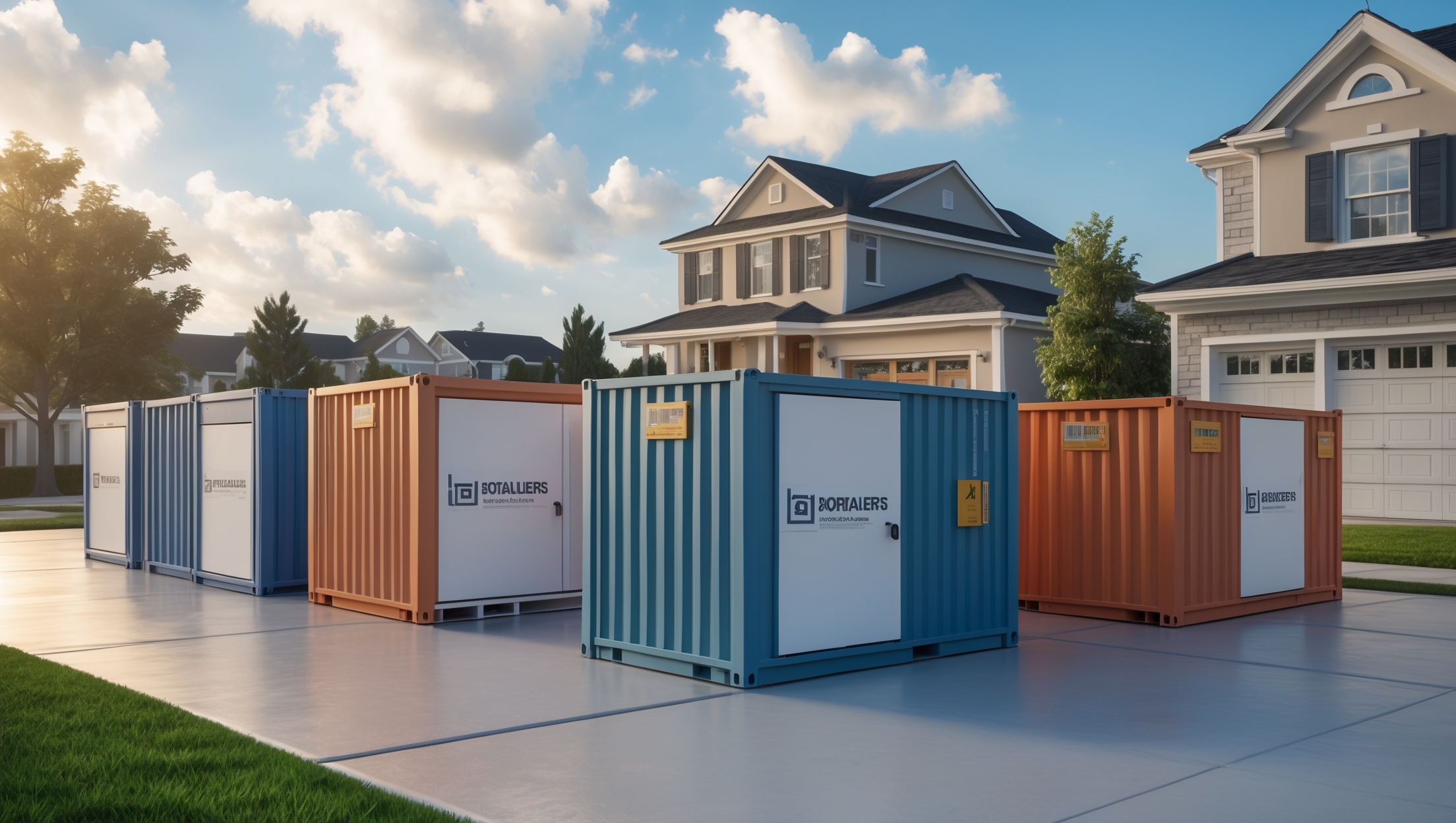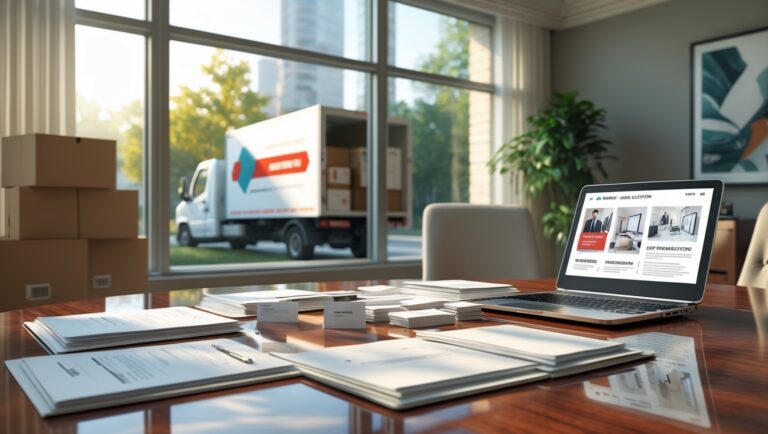Portable Storage Containers: A Detailed Guide to Choosing, Placing, and Maximizing Their Use
Introduction: Portable Storage Containers—A Flexible Solution
Portable storage containers have revolutionized the moving and storage industry, offering unmatched convenience and flexibility for homeowners, renters, and businesses alike. Whether you’re relocating across town, renovating your home, or simply looking to declutter, these containers provide a secure, weather-resistant, and accessible solution. Yet, not all portable storage units are created equal, and making the most of them involves careful selection, strategic placement, and smart usage. In this comprehensive guide, we’ll walk you through the critical considerations for choosing the right container, finding the best spot to place it, and maximizing every cubic foot for efficiency, safety, and savings. Drawing on industry expertise and real-world tips, you’ll learn how to avoid common pitfalls while ensuring your belongings stay protected and easy to access throughout your move or storage period.
Understanding Portable Storage Containers
What Are Portable Storage Containers?
Portable storage containers, often referred to as “moving pods” or “mobile storage units,” are large, weatherproof boxes delivered directly to your location. They’re designed for short- or long-term storage and can be transported to a new address or a secure storage facility. Their modular design and ground-level access make them a popular choice for do-it-yourself movers and those seeking flexible storage solutions.
Key Features and Benefits
- Convenience: Delivered to your door and picked up when you’re ready.
- Flexibility: Load at your own pace, with options for short or long-term storage.
- Security: Sturdy materials and lockable doors protect against theft and weather.
- Accessibility: Ground-level entry eliminates the need for ramps or lifts.
How to Choose the Right Portable Storage Container
Assessing Your Needs
Start by evaluating what you plan to store or move. Take inventory, noting bulky furniture, fragile items, and the total volume of belongings. Many storage companies offer size guides, but as a rule of thumb:
- Small (7–8 ft): Studio or single-room moves, seasonal storage.
- Medium (12–16 ft): 2–3 rooms or apartment moves.
- Large (20 ft+): 4+ rooms, whole-house moves, or business inventory.
Comparing Materials and Build Quality
Not all containers are built the same. Consider:
- Steel Containers: Highly durable, best for long-term storage or harsh climates.
- Composite/Aluminum: Lightweight, easy to maneuver, suitable for short-term use.
- Wood-Framed with Weatherproof Siding: Less durable than steel but often more affordable.
Inspect the container for waterproof seals, ventilation to prevent mold, and robust locking mechanisms.
Vendor Selection: What to Look For
- Reputation: Read reviews and check for proper licensing and insurance.
- Service Area: Ensure they deliver and pick up in your locations of interest.
- Pricing Structure: Understand delivery, pickup, rental, and storage fees.
- Insurance Options: Ask about coverage for damage or loss while in storage or transit.
- Customer Support: Responsive support teams can make the process smoother.
Placement: Where and How to Position Your Container
Understanding Placement Rules and Regulations
Before scheduling delivery, research local ordinances, HOA rules, and permit requirements. Some neighborhoods restrict on-street placement, while others may limit driveway use. Contact your city or property manager to clarify:
- Permissible locations (driveway, street, yard)
- Time limits for container presence
- Permit application process and fees
Choosing the Best Spot on Your Property
Optimal placement ensures accessibility, security, and minimal disruption. Consider:
- Driveway: Usually the easiest and most secure option. Ensure there’s enough room for delivery and loading.
- Street: Only if permitted; place close to your property for convenience and security.
- Yard: Only on firm, level ground. Use plywood to protect grass and avoid sinking.
Check for overhead wires, tree branches, and low-hanging structures that may impede delivery. Allow enough clearance for the delivery truck to maneuver.
Preparing the Site
Proper preparation prevents damage and eases loading:
- Level the surface to prevent shifting or difficult door operation.
- Lay down plywood or boards if placing on soft ground to distribute weight.
- Mark the area with cones or tape to guide delivery.
Maximizing Container Space: Packing and Organization Tips
General Packing Principles
Effective packing not only maximizes space but also protects your belongings. Follow these steps:
- Disassemble Large Furniture: Remove legs from tables, take apart bed frames, and stack flat.
- Use Uniform Boxes: Standard-sized boxes make stacking easier and more stable.
- Fill Boxes Completely: Prevents collapse and shifting during transit.
- Label Every Box: Mark contents and destination room for easy unpacking.
Strategic Loading Order
Plan the order in which you load:
- Heaviest Items: Place appliances, books, and dense furniture on the bottom and towards the back.
- Lighter/Fragile Items: Stack on top and towards the front for quick access.
- Frequently Needed Items: Place near the door for retrieval without unloading everything.
Vertical Space Utilization
Don’t waste vertical space. Stand sofas and mattresses on end (if allowed), and use shelving units to create layers. Secure tall items to anchor points with straps or bungee cords.
Protecting Your Belongings
- Wrap furniture in blankets or pads to prevent scratches.
- Use plastic wrap or bubble wrap for delicate items.
- Fill gaps with soft items (pillows, linens) to prevent shifting.
- Place moisture absorbers or silica gel packs to deter mold and mildew.
Security Tips
Use a high-quality, weatherproof padlock. Place valuable or irreplaceable items towards the back, away from the doors. Consider portable security cameras or motion-activated lights if storing on your property for an extended period.
Optimizing for Specific Scenarios
Renovation and Remodeling Projects
Portable containers are ideal for storing furniture and belongings during home improvements. For projects lasting weeks or months:
- Rotate items as needed—keep tools or supplies accessible at the front.
- Schedule periodic access—coordinate with your storage provider for entry times if stored offsite.
- Use weatherproof containers for long-term outdoor storage.
Business and Commercial Use
Retailers, contractors, and offices can benefit from portable storage for inventory, seasonal items, or equipment. Key tips:
- Implement a labeling and inventory management system.
- Group items by category or project for easy retrieval.
- Consider climate-controlled units for sensitive materials.
Moving Homes
When using containers for moving, coordinate delivery and pickup schedules to avoid delays. If your new location is not immediately available, arrange for interim storage at the provider’s facility.
Safety and Maintenance Best Practices
Loading and Unloading Safety
- Lift with your legs, not your back—use dollies for heavy items.
- Wear gloves and closed-toe shoes to prevent injuries.
- Keep the area around the container clear of tripping hazards.
- Do not overload—respect the container’s weight rating.
Weather Considerations
Extreme temperatures and precipitation can affect your container and its contents. Choose weatherproof models, and consider additional insulation for sensitive items. In flood-prone areas, elevate the container on cinder blocks or a wooden platform.
Routine Checks During Storage
- Inspect for leaks and moisture accumulation after storms.
- Check locks and doors for signs of tampering.
- Re-secure tie-downs and adjust items as needed after transport or heavy winds.
Cost Considerations and Budgeting Tips
Understanding Pricing Models
Portable storage container costs typically include:
- Delivery and pickup fees (charged per trip or as a package)
- Monthly rental fees (varies by size and location)
- Storage fees (if stored offsite at company facility)
- Additional charges for insurance, locks, or climate control
Ways to Save Money
- Compare multiple vendors and negotiate rates.
- Estimate your storage needs accurately to avoid paying for unused space.
- Avoid peak moving seasons (spring and summer) when prices are highest.
- Return containers as soon as possible to minimize rental fees.
- Ask about bundled discounts for multiple containers or long-term rentals.
Environmental and Neighborhood Impact
Minimizing Disruption
Be considerate of neighbors by:
- Placing containers to minimize visual impact and avoid blocking driveways or walkways.
- Informing neighbors of delivery and pickup schedules.
- Keeping the area tidy and free of debris.
Eco-Friendly Options
Some companies offer containers made from recycled materials or with energy-efficient manufacturing processes. Inquire about eco-friendly choices if sustainability is a priority for you.
Conclusion: Making Portable Storage Containers Work for You
Portable storage containers offer an adaptable, secure, and cost-effective solution for a wide variety of storage and moving needs. But getting the most value from them requires more than simply scheduling a drop-off. By carefully assessing your requirements, choosing the right size and type, adhering to placement regulations, and packing with strategy and care, you can ensure your belongings remain safe, organized, and easy to access. Proper preparation of your site, attention to safety, and regular maintenance checks will prevent headaches, while smart budgeting and vendor selection can help you control costs.
Whether you’re using a container for a major move, a home renovation, or extra business storage, these actionable tips will help you avoid common mistakes and maximize every inch of space. Remember, a little planning goes a long way—especially when it comes to safeguarding your possessions and your peace of mind. Take the time to research, prepare, and execute each step thoughtfully. Portable storage containers are a powerful tool in modern moving and storage—make sure you wield that tool like a pro.





